Make a Concept of Nature Art for Interior Design
Modern interior design has its roots firmly planted in the soils of the early 19th century developing throughout the 20th century.
The modernism movement began to unfold as information technology moved away from using traditional edifice and design materials like woods, stone and brick and instead began to focus on industrial materials including glass, steel and physical. The most recognised and influential pattern philosophy was created by the German Bauhaus schoolhouse of design in the 1920s, whose design artful was centred on the belief that grade should combine with role.
This principle saw the emergence of modern design and a style that we recognise and proceed to apply today. From the stark white expect of minimalism, industrialism and Scandinavian interiors to the richer, bolder forms of rustic mod, maximalism, mid-century and glamour.
Modern interior pattern is shaped by a heritage of make clean lines, geometric course, clear spaces, office and storage. Below we explore some of the concepts behind mod design way, how to distinguish each arroyo and how to create the expect in your own habitation.
Minimalism
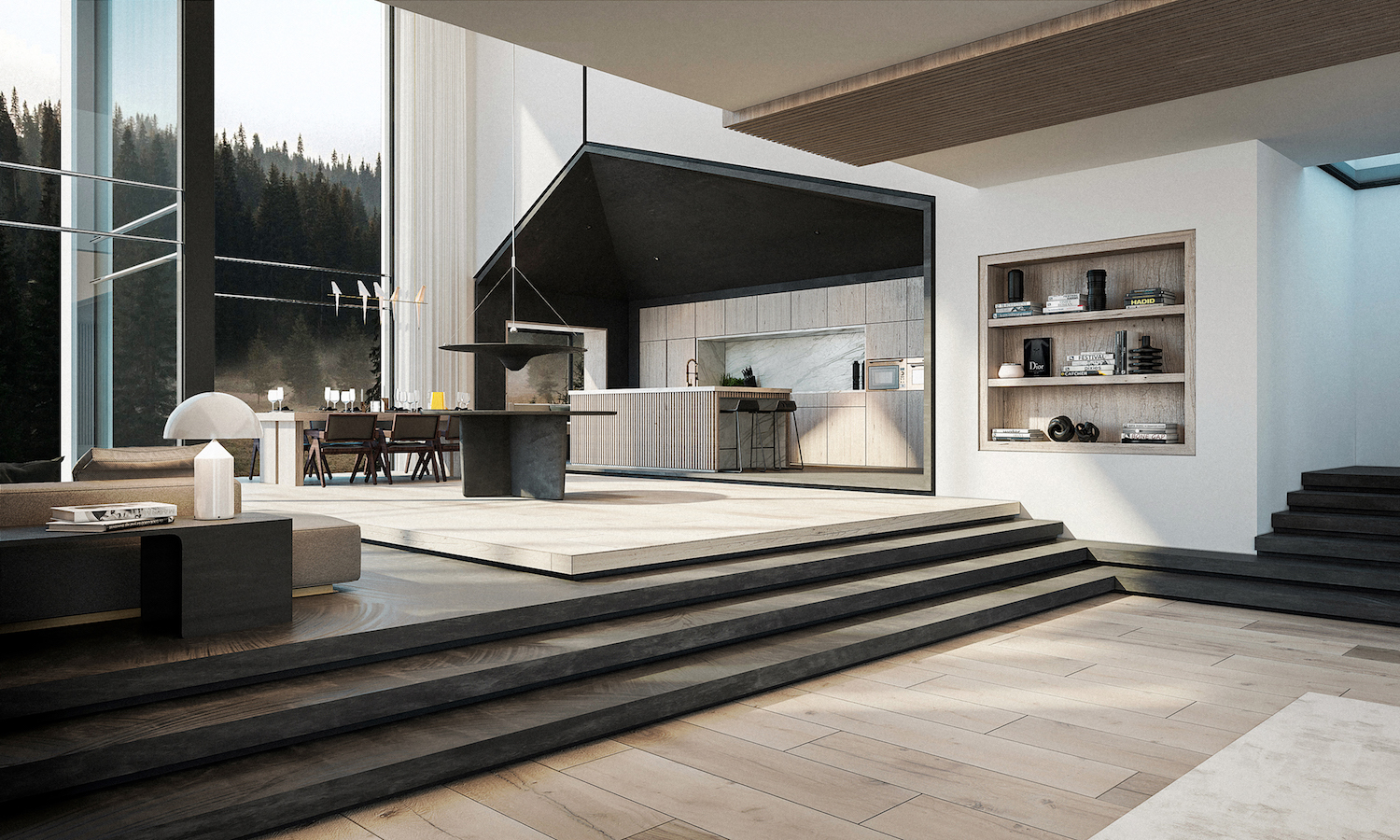
Based on the concepts of simplicity, with influences taken from Japanese gardens and Scandinavian design, minimalism can oft seem austere, however, the idea of this pattern is to streamline the components of living.
Minimalism provides a clear lifestyle for the homeowner to relish by creating a room in which every piece of furniture, shelf, cupboard or work of art has a distinct and necessary function within the infinite.
With its roots in mod interior design, form is also an essential element at play in minimalist interiors, pieces are chosen considering they connect with each other, the space they are in and the outside they look out and onto, altogether they provide the perfect edit of a calming artful.
One of the nifty examples of modern minimalist design and architecture is of course the Frank Lloyd Wright houses whose approach to design was to create modern homes that offered both functionality and simplicity.
Interior designer Ula Burgiel specialises in minimalism, and explains:
"Minimalism allows our mind to focus, it is easier to think and observe the earth around u.s.. Especially when we are distracted with social media and busy schedules, we need homes that help us unwind with clarity, this pattern helps achieve that."
To create a minimalist space in your home, consider these rules; uncluttered rooms with designated storage, clean lines and natural or monochrome colours. Everything in the room must take a purpose and a place. Unnecessary ornament, frills, artworks or extras should be removed, consider the details and architecture of your habitation and honour this instead. Minimalism is perfect for smaller spaces and think, less, ultimately, is more.
Industrial
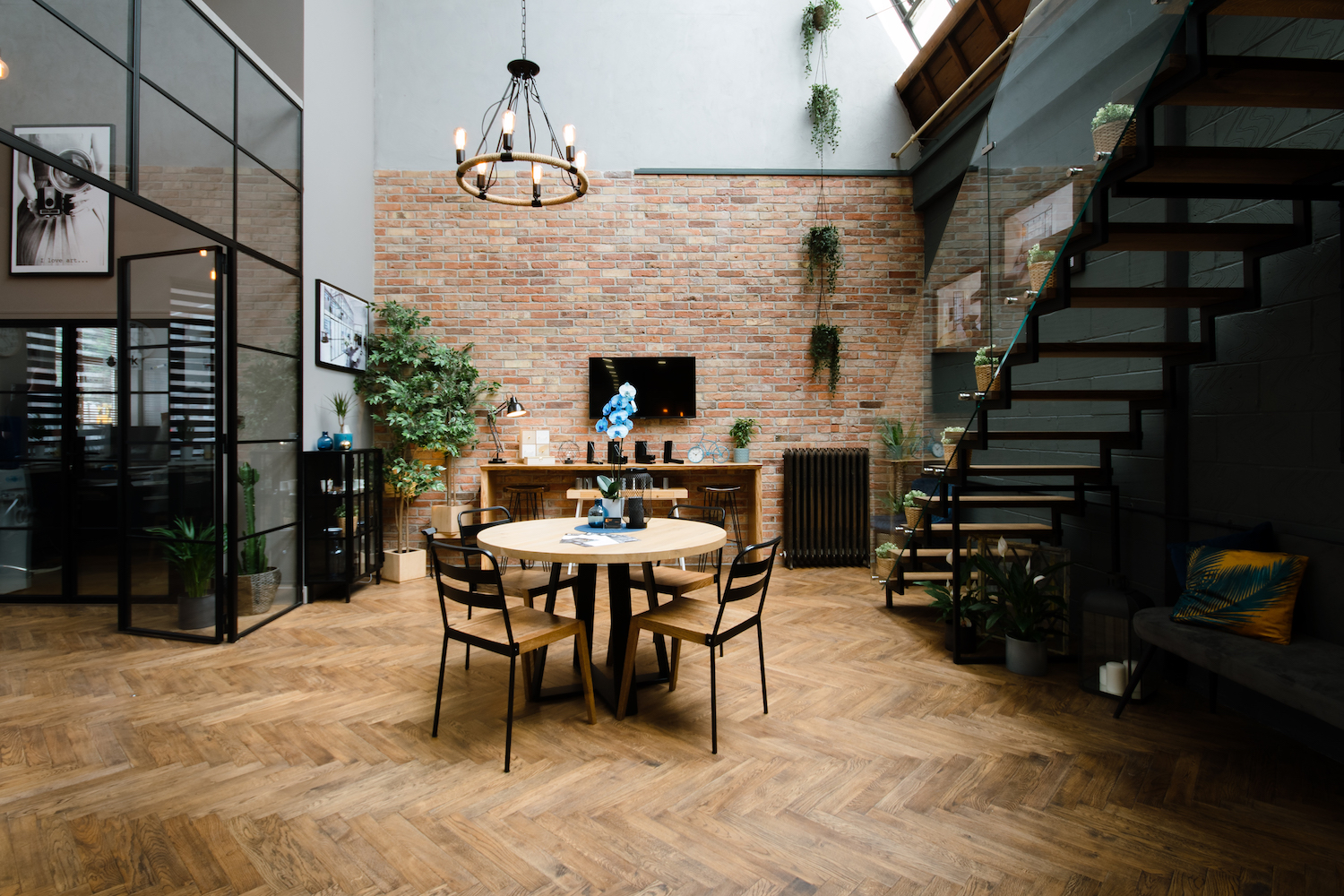
Industrial interior blueprint takes its cue from the singled-out look and feel of factories, warehouses and manufacturing structures of the 20th century. Every bit globalisation changed the way we lived and worked, materials and objects were produced elsewhere in the world, major cities such as New York, London and Berlin were left with vast abased warehouses and factories – these onetime technical buildings informed the foundation of this item school of blueprint.
The aesthetic of industrial pattern shines a lite on the former architectural structure and form of these spaces. The interior style is plant in the utilise of salvaged materials; revealing the details within a building, including brick walls, exposed pipes, ducts and wooden frameworks, concrete flooring, steel framed Crittall windows and doors and opening upwards living spaces to create lofty ceilings and large open up plan rooms.
To recreate this in your ain home consider the following when thinking of industrial design. Open plan living is almost de rigueur to this look, m, breath-taking spaces that celebrate the original structural frames of the building. Utilise exposed stone or brick walls, physical floors and floor to ceiling windows and doors to accept reward of the architecture. Having a large space to piece of work with allows y'all to display generously sized and striking pieces of furniture, rugs and artworks. Warmth is vital in these big spaces, then choose a natural palette and organic textures like wood and leather. Include soft furnishings, enough of light fittings from large chandeliers and freestanding lamp stands to create comfort.
Scandinavian
Alongside other modern design schools of thought Scandinavian pattern ensures functionality and simplicity are at its core. Traditionally hailing from the countries of Kingdom of denmark, Sweden and Norway, Scandi blueprint was in part a rejection of the old globe, as colonialism and aristocratic power began to wane following the first and 2d world wars. Democracy, wealth and the attainment of beautiful things were no longer just the preserve of the elite but condign available to all. Following a series of pattern conferences across Scandinavia in the 1940s and championed by, the then editor of House Beautiful, Elizabeth Gordon, across Canada and the US in the 50s, the Scandi motility become a major interiors force. Thanks to designers such every bit Alvar Aalto, Arne Jacobson and the founder of Ikea, Ingvar Kamprad, Scandi design is now well recognised and enjoyed by millions.
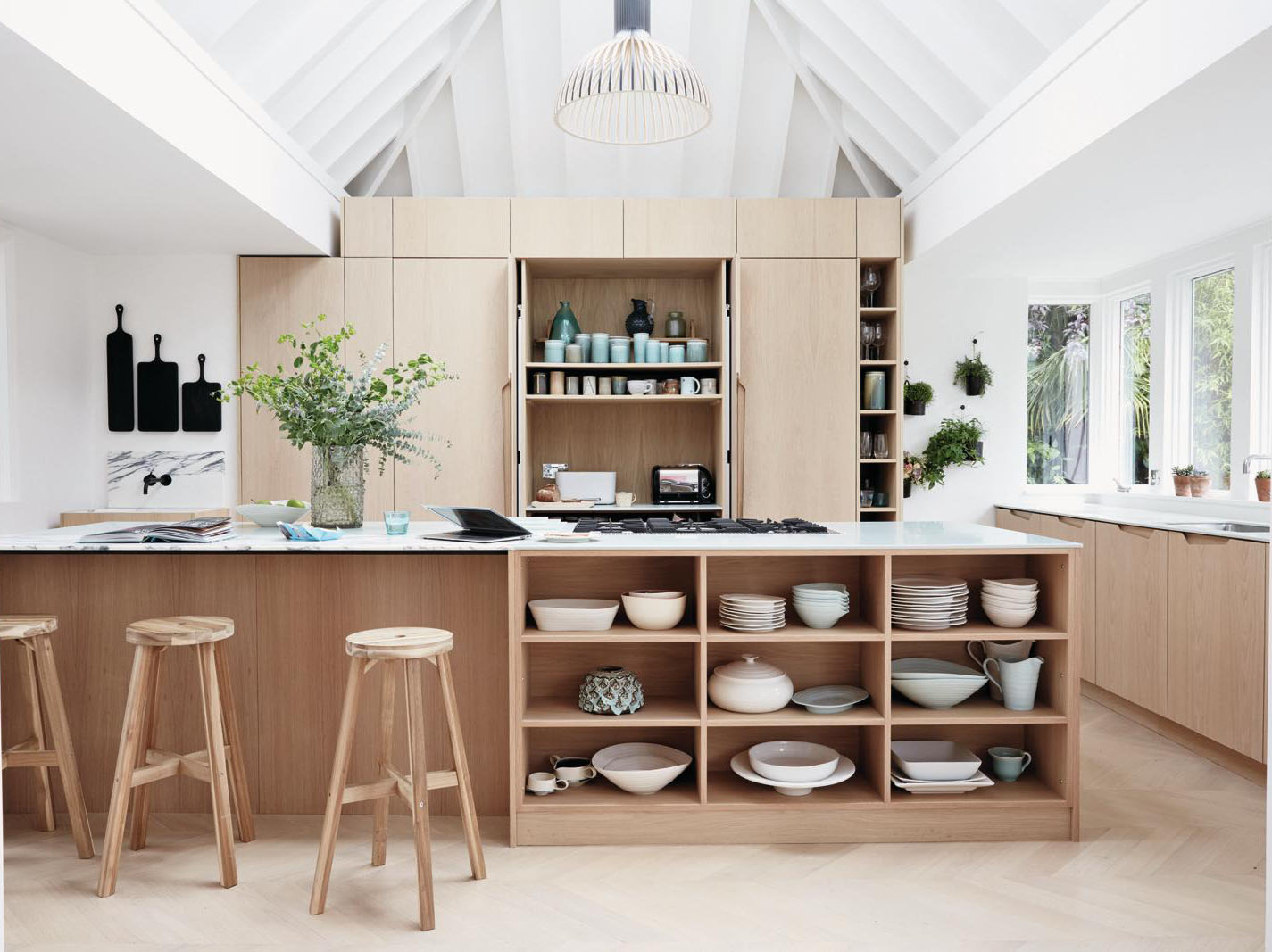
(Paradigm credit: Future)
Scandi blueprint reflects its Northern European heritage, exploiting the common cold, sunlit, forestry regions by cartoon in as much light as possible and reflecting information technology inside. This is created using white flooring, walls and neutral palettes. Emphasis is placed firmly on light and condolement, specifically, hygge. Which essentially means cosiness and is a core component of Scandi design. Warmth is brought into the space using natural materials; wood, stone, wool and linens and spaces are uncluttered and unproblematic. Furniture is sleek, ofttimes fabricated from forest and leather and modern. Excessive decoration and ornaments are non encouraged, simplicity, practicality and comfort are cardinal to honing hygge at dwelling house.
Modernistic rustic
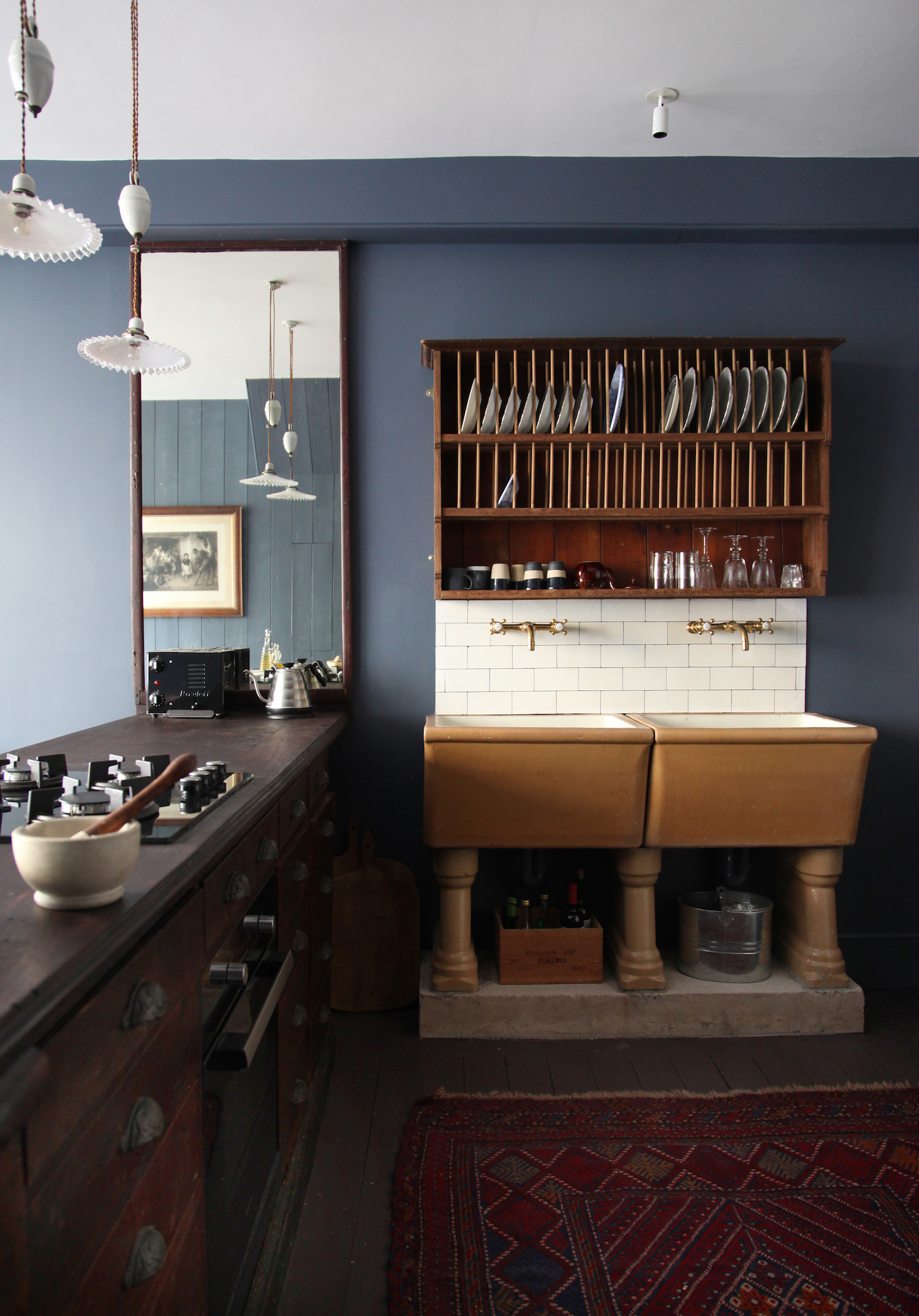
This genre works on the principles of mod interior design; incorporating clean lines with applied living in terms of function and storage, the addition of natural textures and antique details is fundamental. Old buildings can work beautifully with this design as ancient structures provide a beautiful backdrop, but mod buildings are besides able to lend themselves to the rustic expect by fusing antique and vintage furniture and effects. Woods is an important material here for its cute organic nature and raw allure; stripped back floorboards either reclaimed or original, exposed beams, panelled walls and raw untreated wood, work amply.
Antiques are another important element in a rustic environs, adding depth, story and character to a space. Interior designer Patrick Williams of Berdoulat has worked with former buildings for many years and has a passion for their history and arts and crafts, based in the World Heritage urban center of Bath he pursues craftsmanship over commercialism both in his interior design and in the products he crafts and sells. He explains:
"There's no question that Georgian buildings lend themselves to modern interior blueprint. With their well-proportioned elegance and clean lines, they provide the perfect backdrop for simple, sparse interiors, but at the same time tin take a bolder arroyo, with dramatic color and pattern."
Maximalism
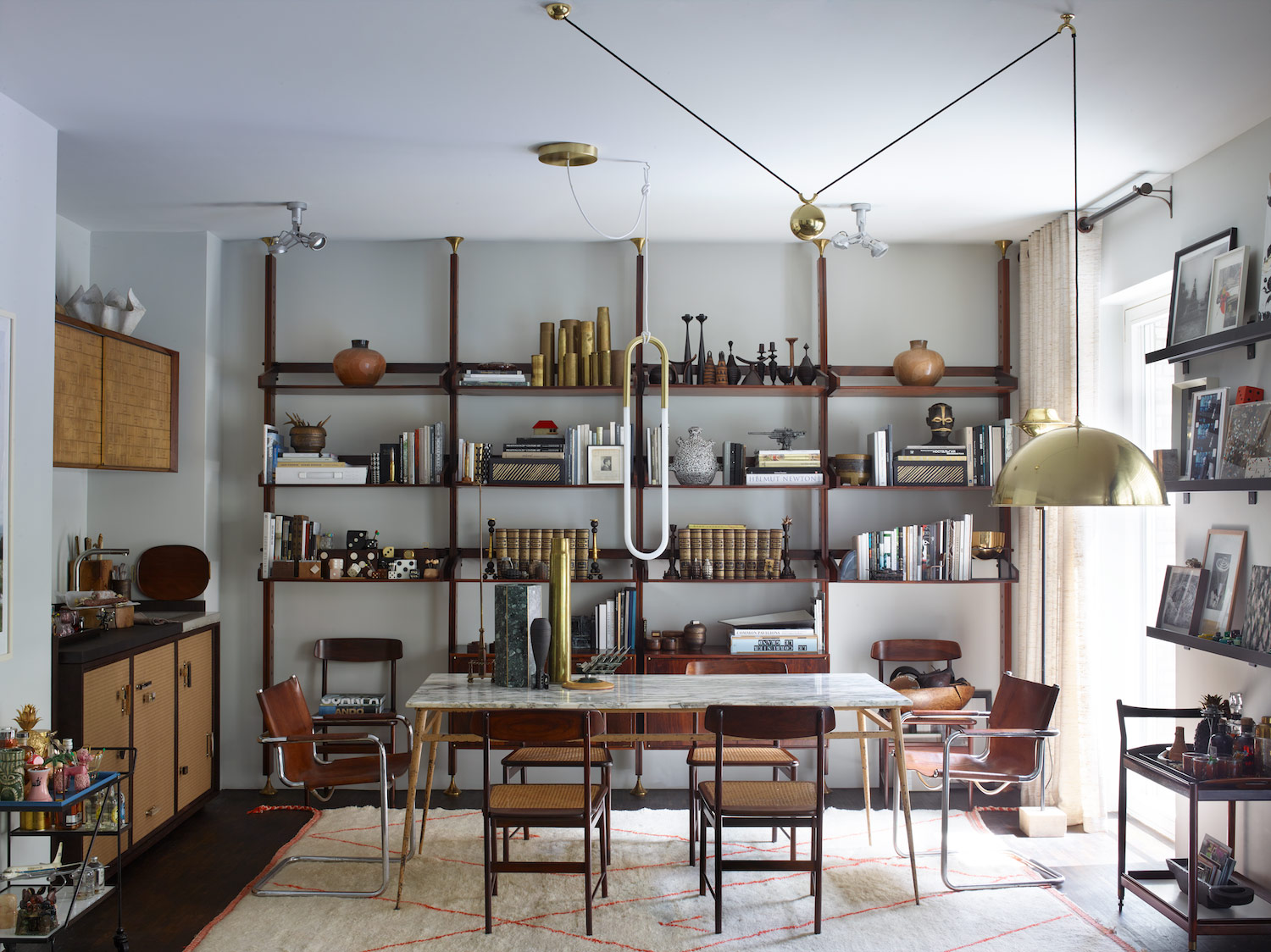
As with all fashions and styles everything comes and goes over time and maximalism is seen as a push dorsum to minimalism. The repose whites, minimal decorating and less is more philosophy of minimalism is tossed out completely with maximalism, as colour, décor and more than is more, are the go-to aspects of this design schoolhouse of idea. Withal, piece of furniture, colour, pattern, textiles and collections are not added without clear idea and clarity.
Maximalism takes time to create, it is a curation of layers and this system is admittedly critical to the overall upshot, producing colourful comfort and curiosity. By slowing edifice up collections, exist it houseplants, antiquarian books or ceramic sculptures, you will eventually create an organically layered effect.
Maximalist queen, and founder of Shoreditch interiors store WA Light-green, Zoe Anderson advises:
"Beingness a maximalist is all about going with your gut, not beingness afraid of making mistakes merely taking your fourth dimension. Remember colour loves colour then layer upwards and go for it.To avoid things looking too contrived, let things to happen naturally. We maximalists are like magpies, we're collectors, we can't finish ourselves when we come across something that screams: 'yous need me'. Virtually recently I fell in honey with some plates but the simply wall space was above a door frame. They await ace in that location which just shows where there'southward a will there'southward always a way."
Using multiple colours and patterns is fundamental, but consider using one colour or tone equally a connecting theme throughout, information technology volition provide a sense of residue in the room. Scale and type of furniture is fluid in a maximalist infinite, mixing modernistic with mid-century or antique is absolutely fine and in fact, encouraged, each slice adds to the bold richness of a maximalist abode.
Interior designer Hubert Zandberg explains the styling in his Berlin apartment: "Perhaps the best illustration of 'modernism' used in an 'eclectic conversation' is my Berlin apartment. I very deliberately created this environs to examine the relationship between Bauhaus, Brazilian modernism and African cubism. I believe the clarity, simplicity and structure that modernism/Bauhaus brings, forms a robust corner stone whereupon one can layer to any degree. The strong skeleton that carries any amount of 'fleshing out'...fifty-fifty 'carrying' the virtually maximalist interior!"
Mid-century
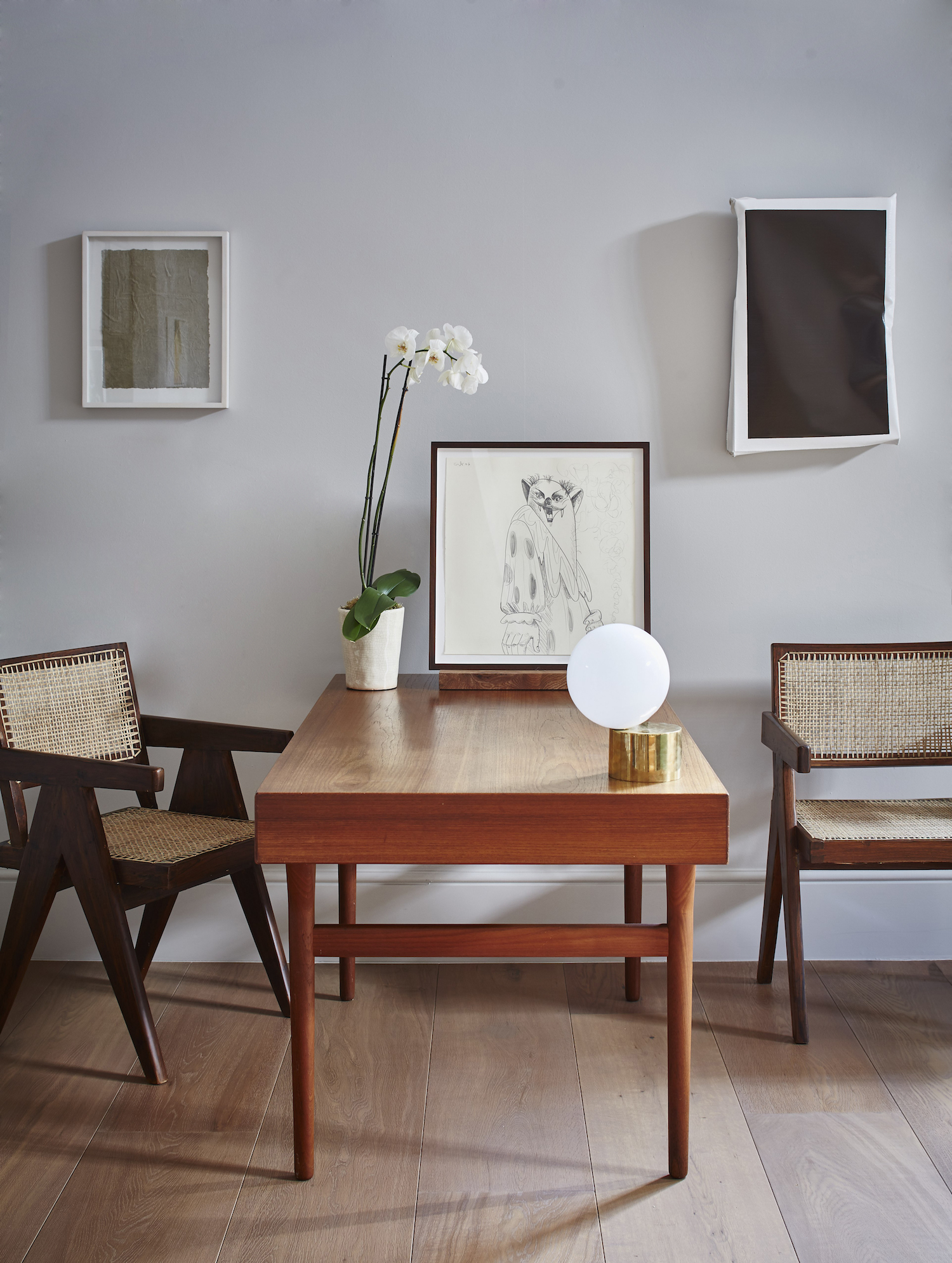
Mid-century style has gathered pace in the terminal few decades, non least because the furniture of this period tin can nevertheless be picked up at an affordable toll, and this, essentially is what mid-century article of furniture design was created for: the masses.
Following two globe wars the proliferation of urbanisation and domicile-buying, among suburbanisation began, and the demand for modern furnishings grew with it.
Iconic names such as Charles and Ray Eames, Herman Miller, Ercol, Florence Knoll and Hans Wegner flourished on the scene. The typical design of the era, which spans approximately across the 1920s to the 60s and 70s, was to embrace the modern technologies of the 24-hour interval, the look was unembellished but sleek and make clean, call up fine legs on a piece of wooden piece of furniture. As advances in production took concur materials including plywood, fibreglass, metal and laminate were utilised, adding to the abiding genre which was practical, affordable and casual.
Mid-century is very adaptable for 21st century interiors, comfortable sofas, aslope tables and chairs from this era sit easily in today's homes. The colours are inviting, soft warm tones of orangish, yellow, greenish or grey, and natural elements like wood, exposed brick and stone work beautifully with the sleek lines and article of furniture of the mid-century.
Modern glamour
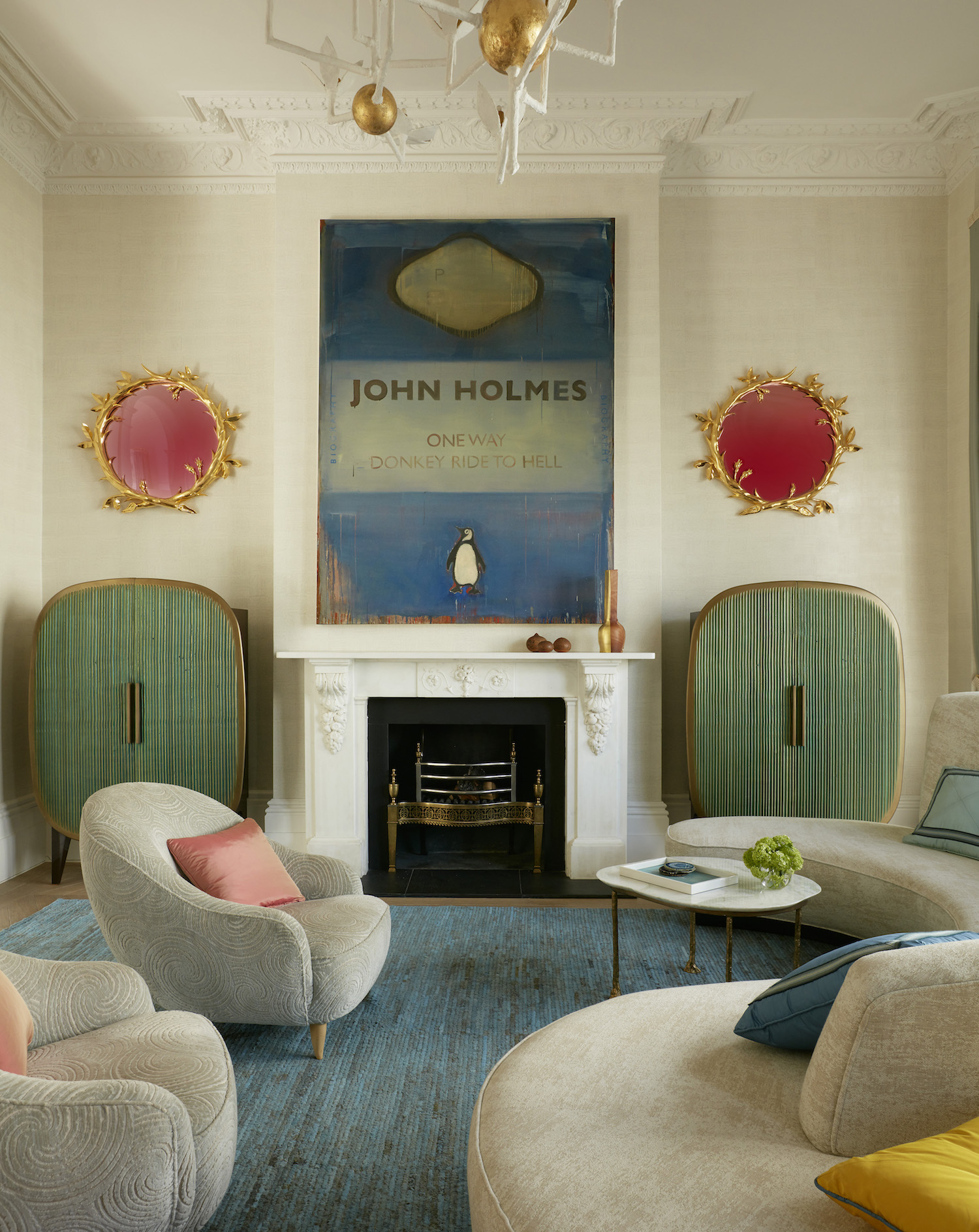
Mod Glamour is an expressive interiors way with roots in Art Deco and the sometime-globe allure of Hollywood. The decadent styles of the 20s, 30s, with rich golds and colourful infusions, sumptuous soft materials and fluid lines. Interior designers, including Jonathan Adler and Maddux Creative imbue ideas from this era combined with modernism influences and architecture to create visionary spaces with a narrative steeped in colour, artistry, comfort and luxury.
Scott Maddux of Maddux Artistic explains the origins of his design process.
"Many of the key principles of Bauhaus philosophy accept an influence on our design work: form follows function; material integrity; streamlined aesthetics; a preference for balanced composition over symmetry. Yet, the fundamental principle of designing buildings harmoniously in their entirety, from structure to finishes to decoration and effects is surely the most influential."
To create a space to reflect a modern glamour aesthetic, choose curvy contemporary pieces of article of furniture, bold colours, aslope pastel or soft tones. Brand m gestures with your choices of furniture, lighting or art and consider adding an abracadabra of metal in the form of statuary or golden.
Your mod interior design questions answered
What is modern interior design?
Modern interior design is based on the principles of the modernism motility of the 19th and 20th centuries, Bauhaus philosophy and architecture and the evolution of affordable and practical design. Article of furniture, art and decoration moved away from ornate styles simply available to the wealthy elite, to more than applied, minimal styles for the masses.
What is the deviation between modern and contemporary interior design?
Contemporary design is a reflection of arts, interiors and design that is happening currently, literally right at present. Modern design is from the previous century.
What are the master interior pattern styles?
Interior design styles are fluid and constantly evolving but include, minimalist, maximalist, industrial, Scandinavian, mid-century, modern glamour and rustic modern.
What are the main 2020 interior design trends?
Influential design trends this twelvemonth include fringing, bold monochromatic colours, luxurious textiles, wallpapers, patterns and texture, sustainable materials, layered interiors using pieces from across eras and styles, natural tones and organic elements.
Who are the most famous interior designers?
The most famous interior designers currently include Hubert Zandberg, Susan Deliss, Jonathan Adler, Rita Konig, Colefax & Fowler, Harding & Read, Studio Ashby, Maddux Creative, Sigmar London and Berdoulat.
How much do interior designers cost?
Interior Pattern is not cheap, and a professional interior designer can cost anywhere from £1,000 to £x,000 and beyond, and these figures may not include the furnishings or furniture. However, at that place are a proliferation of designers and brands who are bringing interior pattern to more than people past offering affordable services online including, Homewings, John Lewis and Decorist.
Interior design is an e'er evolving process and this century will see new concepts, materials and thinking revolutionise the way we live in our homes.
Source: https://www.livingetc.com/spaces/interior-inspiration/modern-interior-design-242293
0 Response to "Make a Concept of Nature Art for Interior Design"
Post a Comment